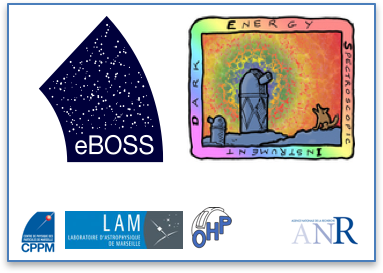In the era of upcoming redshift surveys, the sky will be more revealing than ever! In this talk, I will summarise standard and non standard observational methods and scenarios.
The Alcock-Paczynski test is a very simple yet powerful tool to constraint cosmology when applied to voids. In this talk, I will present preliminary work accomplished in order to master void related systematics in the Alcock-Paczynski test.
In this session, I will briefly mention my plans for this project, and try to set up a schedule for the analysis.
We present the current performance of the machine-learning code, SQUEzE, to identify quasars and estimate their redshift. We compare its performance with that of QuasarNet and conclude that, while it may not be as accurate as QuasarNet, it is lighter and more flexible
I will present the current status of the Lya group
We are measuring the large scale of inhomogeneity of metals, which are expected to be associated with large scale proximity to quasars. These inhomogeneities are currently traced by combining oxygen, helium and hydrogen absorption, but in the future they will refer to directly observed quasar positions.
I am going to present the latest measurements of the DLA bias. In particular I'll present its evolution with redshift, column density of the DLAs, and the metal strength of the DLAs. The metal strength is defined from an average of equivalent widths of the strongest detectable low-ionization metal lines. These results confirm the physical origin of the relation of bias factors measured from...
I will discuss latest results on the properties of galaxies traced by the strong Lyman-alpha forest absorption and, on combining them with Damped Lyman alpha forest absorbers, their use as a BAO tracer.
Presentation of the analysis of the 1D power spectrum from the lyman alpha forest with DR14

